


The Best Credit Cards Of 2024
For better or worse, credit cards are an integral part of our financial lives. As of the end of 2022, the average American consumer carried $5,805 in credit card debt. According to TransUnion’s year-end report, total credit card debt grew by 18.5% over 2021 levels.
These trends aren’t surprising. Americans rely on credit cards for everything from basic necessities to major purchases, and that makes finding good credit cards an essential part of smart financial planning. Whether you want to travel more or simply need to rebuild your credit, getting the right mix of credit cards can help you achieve your goals.
To that end, we’ve put together a list of the 10 best credit cards if 2023, broken down into a few key categories. These personal cards offer some of the best perks on the market — from low APRs to everyday cash back.
The Best Credit Cards For Cash Back
Chase Freedom Flex
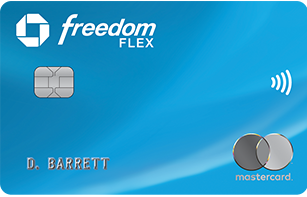
Show More Details
The Chase Freedom Flex℠ is the perfect everyday credit card, featuring a solid 3% cash back on dining and drugstores and 1% on every other purchase. If you follow the rotating rewards categories and book travel through Chase, you’ll snag an extra 4% in bonus rewards on those purchases. The only downside is that you have to activate bonus categories and make sure you use your card at the right times.
Additional Details
- Extra $200 cash bonus when you spend $500 in the first three months
- 5% cash back on up to $1,500 in rotating categories that change each quarter (requires activation)
- 5% on travel when booked through Chase Ultimate Rewards®, plus 3% on dining and drugstores and 1% on all other purchases
- No annual fee
Discover it Student Cash Back

Show More Details
Think of the Discover it® Student Cash Back card as the Chase Freedom Flex℠ for students or new borrowers. You don’t need a high credit score to qualify, and you get similar benefits — 1% cash back on everything and 5% on rotating quarterly categories like gas stations and grocery stores. This card also comes with a nice perk of a full cash-back match for the first year. You’ll need to activate categories and monitor spending to maximize card benefits.
Additional Details
- First-year cash-back match doubles rewards
- 5% rewards on rotating categories, limited to the first $1,500 of spending in each category
- Qualify without credit history
- 0% APR for the first six months
Best For 0% APR
Wells Fargo Active Cash® Card

Show More Details
With a 15-month introductory 0% APR, the Wells Fargo Active Cash® card is ideal for balance transfers or large initial purchases. You’ll need to transfer your balance within the first 120 days to qualify, and there is a 3% transfer fee. This card is also a solid everyday spender — you’ll get 2% cash back on all purchases. Watch out for foreign transaction fees, though.
Additional Details
- No annual fee
- Unlimited 2% cash back means no rewards categories to keep track of
- Up to $600 in cell phone protection for damage or theft when you use the card to pay your cell phone bills
- 3% fee on balance transfers in the first 120 days, then 5% thereafter
- Premium, luxury hotel benefits through Visa Signature Concierge
Best For Travel Rewards
Capital One Venture X Rewards Credit Card
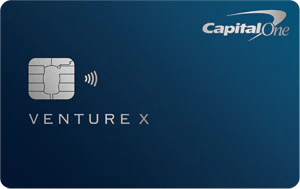
Show More Details
This premium travel card is loaded with perks. If you play it right, your earnings can easily outweigh the $395 annual fee, which is already lower than many cards in this category. Earn 5 miles per dollar on flights and 10 miles per dollar on hotels and rental cars, plus up to $300 in annual statement rewards when you book through Capital One Travel. You’ll also get 10,000 bonus miles ($100) every year on your anniversary. Keep in mind that Capital One’s travel partners and lounge network are still relatively limited.
Additional Details
- Unlimited 5X miles on flights and 10X miles on hotels and rental cars booked through Capital One Travel
- 2X miles on all other purchases
- Annual bonuses: 10,000 miles ($100) every anniversary and up to $300 in statement credits for using Capital One Travel
- Luxury hotel benefits and unlimited complimentary guest access to over 1,300 lounges
- Up to $100 in credit for TSA PreCheck® or Global Entry
United Club℠ Infinite Card
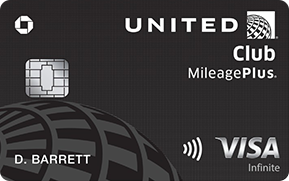
Show More Details
If you don’t mind sticking with one airline, the United Club℠ Infinite Card is our top choice. It grants you free United Club membership, which comes with complimentary snacks, beverages and Wi-Fi while you wait for your flights. Plus, all United purchases earn 4 miles for every dollar, and you can check your first two bags for free when you book with your card. Other rewards are low compared to other cards in the category, and the annual fee is high, but it’s well worth it if you’re a United traveler.
Additional Details
- Earn 80,000 bonus miles when you spend $5,000 in the first three months
- 4X miles on all United purchases, 2X miles on dining and other travel
- 1 mile per dollar on all other purchases
- 500 Premier qualifying points for every $12,000 in purchases, up to 8,000 per year
- Up to $100 TSA PreCheck®, Global Entry or NEXUS fee credit
Hilton Honors Aspire Card from American Express *
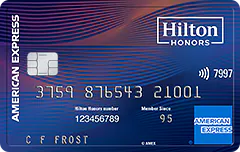
Show More Details
This American Express card is a top-tier option tailored to frequent travelers who favor Hilton properties. It carries a hefty annual fee, but that’s easy to make up for in perks if you stick with Hilton for your travels. Purchases at Hilton earn you 14 points per dollar, and resort spending earn you resort credits. Point values aren’t as high as they are for some other cards, so you’ll need to rack up more to earn the full benefits.
Additional Details
- 14X Hilton Honors points for purchases at eligible Hilton hotels and resorts
- 7X points for using your card to book flights at amextravel.com, book rental cars with select partners or dine at U.S. restaurants
- 3X points for all other purchases
- Earn valuable credits: $250 resort credit each year for eligible purchases at Hilton Resorts, $250 airline fee credit and a free night’s stay every year at renewal
Best For Balance Transfers
Wells Fargo Reflect® Card

Show More Details
If you need to make a balance transfer with a long payoff window, check out the Wells Fargo Reflect® card. It doesn’t offer any reward perks, but you’ll get a 0% APR for 21 months on qualifying transfers. A 5% balance transfer fee applies, and this card includes a 3% foreign transaction fee.
Additional Details
- Balance transfers must be made within the first 120 days to qualify for intro APR, 5% fee applies (minimum of $5)
- Up to $600 cell phone damage and theft protection when you use your card to pay your cell phone bill
- No standard rewards, but you can earn deals and cash back through My Wells Fargo Deals
- No welcome bonus
Best For Bonus Rewards
Amazon Prime Rewards Visa Signature Card
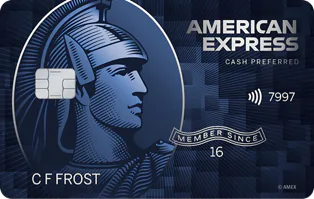
Show More Details
The Blue Cash Preferred® card is designed especially for big grocery spenders in the U.S., as well as those who drive a lot or rely heavily on public transit. Earn 6% cash back at U.S. supermarkets and select streaming subscriptions, plus 3% on transit and U.S. gas stations. These can easily offset the small annual fee, which you’ll get to skip for the first year anyway.
Additional Details
- $250 statement credit for spending $3,000 in the first three months
- 6% cash back at U.S. supermarkets capped at $6,000 in purchases per year, then 1%
- 1% cash back on all other purchases not noted above
- $7 back each month for purchasing a subscription to The Disney Bundle
- 0% intro fees for Buy Now, Pay Later for first 12 months
Best For Bad Or No Credit
Discover it® Secured Credit Card
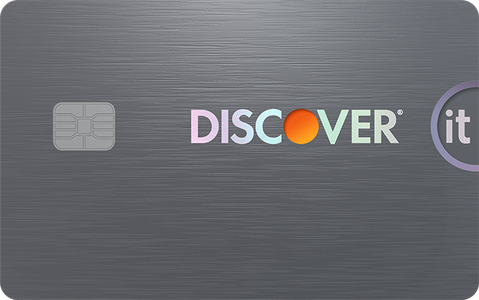
Show More Details
Secured credit cards offer new borrowers or those with poor credit the chance to start building a healthy credit profile, and the Discover it® secured card is the best of the bunch. There’s no penalty APR, and the rewards opportunities are plentiful for a secured credit card. Initially, your credit line will equal your deposit (which starts at $200). However, after seven months, you’ll be eligible for automatic reviews to see if you can transition to a standard card.
Additional Details
- 2% cash back at gas stations and restaurants on up to $1,000 in combined purchases per quarter
- 1% cash back on all other purchases
- No annual fee
- Access to Discover’s identity-theft-prevention services
What Is A Credit Card?
Credit cards offer you a way to make purchases and pay for them later. Unlike debit cards, which withdraw funds directly from your checking account, credit cards grant you a short-term loan that you can use to purchase items and pay them off over time.
Although each credit card has its own unique features and terms, the basics always work the same. Upon review of your credit history and financial profile, the credit card issuer will grant you a card with a set borrowing limit, annual percentage rate (APR) and payment schedule. If you don’t pay your full balance by the due date each month, you’ll begin to accrue interest charges on your outstanding balance.
There are many types of credit cards, from cash-back cards and travel rewards cards to ones designed for specific vendors, such as hotel chains. Some cards target students, while others are aimed at borrowers with poor credit. In today’s economy, finding the right card for your situation can help you build credit and maximize benefits.
Keys For Comparing Credit Cards
When you compare credit cards, it’s important to understand the basic card elements so you can clearly evaluate the differences between cards. You’ll find a lot of fine print in credit card documents, but the following are the most important items to note.
APR
All credit cards charge an interest rate, known as the annual percentage rate (APR). This is the rate you pay for any outstanding balances you haven’t paid by the original due date. It’s much higher on credit cards than it is on mortgages or other secured loans. The APR also compounds, meaning you pay interest on the interest you’ve already accrued. That’s why credit card debt can quickly snowball out of control.
Many cards offer introductory periods with 0% APR, and your regular APR will be based on your credit score and payment history. Regardless of the rate, if you pay your card’s balance by the due date every month, you will never pay any interest, so this feature may be less relevant if you don’t expect to carry a balance.
Fees
All credit cards include certain fees, but the specifics vary by card. No matter what credit card you have, you’ll pay a late fee if you don’t pay the minimum balance by the due date. Some cards also include fees for annual renewal, foreign transactions and balance transfers. It’s important to make sure a card’s benefits outweigh any of its fees.
Credit Requirements
Each credit card has different requirements when it comes to your credit score, which evaluates your history as a borrower and helps lenders assess risk. Some cards are designed for new borrowers or those trying to rebuild their credit and have low or no credit score requirements but instead require a deposit.
Other cards have high credit score requirements and are only available to low-risk borrowers. Before you start applying for cards, check your credit report for free at annualcreditreport.com and find out the credit requirements for each card you borrow. That way, you’ll understand which cards you can qualify for before you apply.
Rewards
These days, rewards are one of the biggest marketing features lenders use to attract borrowers. Many credit cards offer a certain percentage back on every purchase in the form of cash, statement credits or travel rewards. Some do this at a single flat rate, while others offer a range of bonus tiers based on specific spending categories. Many also offer bonuses for spending a certain amount within the first few months.
When comparing credit card rewards, consider your spending habits. Some perks may sound attractive but prove worthless if you don’t spend money in the right categories.
Credit Limit
When you are approved for a credit card, your card issuer will offer you a set credit limit based on your income, credit score and other debts. This determines how much you can borrow each month, and it’s important for building your credit score. If two cards have similar features in every other area, go for the one with a higher limit (as long as you won’t abuse it).
Pros And Cons Of Using Credit Cards
Although most people use credit cards, they’re not for everyone. Consider a few pros and cons to determine if they’re right for you.
Pros
- One of the best ways to build credit and improve your score
- Rewards programs help save money on a variety of purchases or travel expenses
- Can simplify money and cash-flow management by giving you one balance to pay each month
- More safety features than debit cards
Cons
- High interest rates compared to other forms of debt
- Delayed payments can encourage you to spend more than you can afford
- Compounding interest can lead to significant debt problems
- Falling behind on payments can seriously hurt your credit score
Tips For Building Credit
Your credit history and score are critical for helping you increase your borrowing power. If you’ve never had a credit card or need to rebuild your score, try a few simple tips:
- Apply for a secured credit card: Put down a deposit for a small credit limit so you can begin borrowing and paying off your balance to build good credit history.
- Always pay on time: Nothing hurts your score more than late payments and defaults, so make this your highest priority when trying to build your credit.
- Minimize your credit card use: The more of your credit limit that you use, the more it will hurt your credit score. Aim to keep your spending under 30% of your total borrowing limit.
- Don’t apply for new credit too often: Frequent applications make you look risky to lenders. A good rule of thumb is to wait at least six months between applications.
- Aim for a good mix: Lenders like to see that you have a mix of revolving credit (like credit cards) and secured installment loans (like mortgages or auto loans).
Building good credit is a process that takes time, especially if you’ve had financial difficulties in the past. But no matter your borrowing history, you can work toward a good credit score with patience, persistence and good financial practices.
Types Of Credit Cards
- Rewards Credit Cards: Offer cash, points, or miles.
- Airline and Hotel Credit Cards: Focus on specific travel-related perks.
- Balance Transfer Cards: Suitable for those seeking to pay off high-interest debt.
- Low-Interest and 0% Credit Cards: Cater to those who plan to carry a balance.
- Specialized Cards: Designed for college students, small business owners, and individuals looking to build or rebuild credit.
Choosing A Credit Card
Consider several factors such as credit score, desired card type, specific needs, and overall value. Compare features such as annual fees, balance transfer fees, and foreign transaction fees to find the right fit.
Security Measures
Credit cards are equipped with security features to protect against unauthorized use. They include:
- Chip Technology: Makes it harder to fraudulently copy card information.
- Contactless Payments: Allows tap-and-go payments, using encryption to secure transactions.
- Online Security Measures: Some cards offer one-time passwords and notifications for online transactions.
Frequently Asked Questions (FAQs)
Can I Apply For Multiple Credit Cards At Once?
Technically, you can apply for as many cards as you want at any given time. However, keep in mind that multiple credit checks in a short period will negatively affect your credit score.
Should I Have More Than One Credit Card?
In the long run, it can be helpful to work toward having multiple credit cards. A mix of different types of rewards can help you maximize card benefits. Plus, each credit card adds to your total borrowing limit, which helps you keep your borrowing percentage down and improve your credit score. However, it’s a good idea to limit your credit cards if you’re a new borrower or you’ve had trouble using cards responsibly.
What happens If You Are Late On A Credit Card Payment?
If you’re late on a payment, it’s important to contact your credit card issuer and make your minimum payment as soon as possible. Once your payment is more than 30 days late, your lender can report the delinquent payment to the credit bureaus, and this will significantly affect your credit score.







